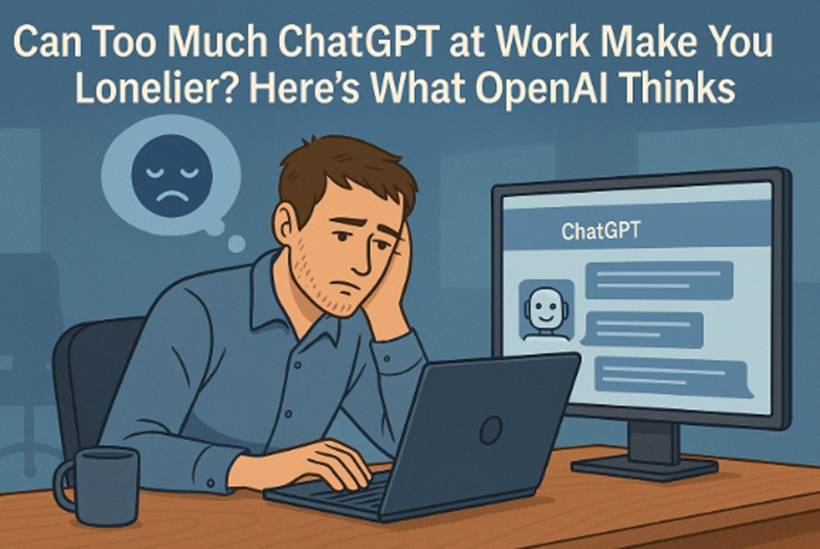AI is rapidly becoming part of our everyday work life—but what happens when we start chatting with machines more than our coworkers? According to a new study from OpenAI and MIT's Media Lab, overusing AI tools like ChatGPT might intensify feelings of loneliness, especially among heavy users.
The Rise of ChatGPT—and a Hidden Cost
AI chatbots have changed how we interact with technology. Tools like ChatGPT have become virtual assistants, brainstorming partners, and even pseudo-therapists for some. But this growing intimacy between humans and machines has sparked concern: Are we becoming more isolated as we spend more time talking to AI?
That's the question raised by OpenAI and MIT researchers, whose findings suggest that frequent interaction with AI could have unintended emotional consequences, particularly for so-called "power users"—those who spend long hours engaged in conversation with the chatbot.
Power Users Report More Loneliness, Lower Social Interaction
While most people interact with ChatGPT in short bursts—asking for help writing emails or summarizing content—others use it far more extensively. The study found that users with higher daily engagement across different tasks and topics reported:
To ensure accuracy, researchers measured not just users' feelings of loneliness, but also their actual social interactions, helping separate mood from reality.
Tone Matters: How AI Conversations Affect Emotions
Interestingly, the study found that how the AI speaks makes a big difference. When ChatGPT responds in a neutral, efficient tone—think robotic or overly formal—it can amplify loneliness, especially for frequent users. But when the chatbot takes on a more friendly, engaging, and emotionally responsive tone, the sense of disconnection is reduced.
This reinforces a basic truth about human interaction: We want to feel heard. If your digital assistant sounds like a bureaucrat at the DMV, it might leave you feeling empty. But if it's more like the AI companion from Her, you're more likely to walk away from the interaction feeling better.
The Bigger Picture: AI at Work Is Here to Stay
None of this means companies should stop using AI. But it does raise a big question for business leaders: Should we be keeping an eye on how long employees spend interacting with AI tools?
In some cases, the shift is already underway. A Google executive recently admitted to Wired that she now chats with Gemini AI during her commute instead of calling her sister. That's a win for AI engagement, but possibly a loss for personal connection.
At companies like Moderna, leadership is leaning into the AI wave. The CEO has even suggested that employees should interact with ChatGPT at least 20 times a day to improve productivity. But what does that do to workplace culture?
AI Replacing the Water Cooler?
Once upon a time, office small talk, lunch breaks, and even the concept of a "work spouse" added vital human connection to our 9-to-5 lives. But as workplaces go more digital, those casual interactions are fading. And with AI tools evolving to feel more personal, some executives even envision a future where workers spend more time talking to bots than colleagues.
That's already happening in platforms like Slack, where leadership is exploring ways to make AI agents a more central part of daily workflows.
Efficiency vs. Well-Being: Finding the Balance
There's no question that AI tools can boost productivity. From generating reports to handling emails, AI can make life easier and save time. But there's a trade-off.
If employees are glued to AI tools for hours—especially if those tools simulate real conversation—it's worth considering how that might affect mental health and workplace satisfaction.
The science is clear on one thing: Happier workers perform better. If overuse of AI tools is quietly chipping away at human connection, companies may need to rethink how they deploy these technologies—not to halt progress, but to ensure it's human-centered.
